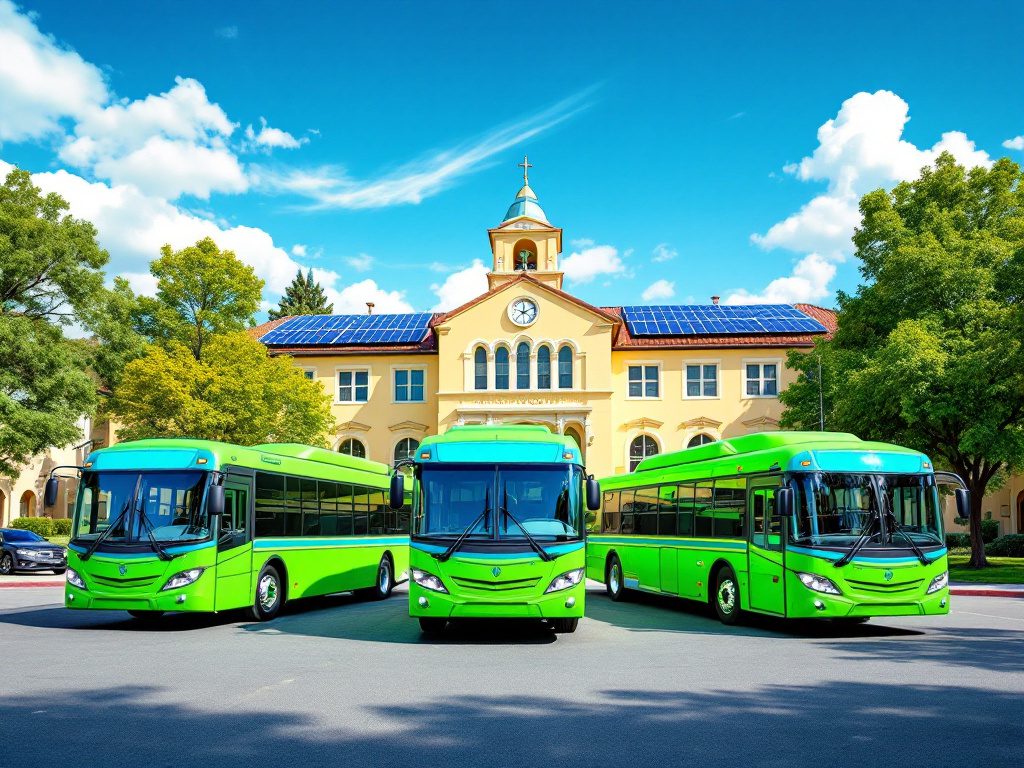California Charts Its Own Course on Clean School Transportation
On a misty morning in Northern California, the rumble of a diesel school bus has been replaced by a quiet hum as children board their new all-electric ride to class. This isn’t just a local curiosity: it represents a bold move by California’s leaders to stake their ground amid a national crossroads on climate action. While most states are grappling with federal pauses and cuts that threaten progress, California has chosen determination over delay, committing $500 million for the purchase of 1,000 additional electric school buses and an expanded charging network, a decisive signal that environmental leadership won’t wait for Washington to catch up.
Gov. Gavin Newsom’s office announced that more than 130 rural, low-income, and disadvantaged school districts will benefit from the latest grants, with priority given to communities historically burdened by air pollution and lacking access to cleaner infrastructure. The investment, funded through the state’s cap-and-trade program, will also support the installation of nearly 500 new charging stations—adding to the more than 200 already in operation, laying the groundwork for what experts say could soon be the most robust zero-emission transportation ecosystem in American education.
Across the country, stalled federal commitments have caused other states to shelve or delay similar plans. According to transportation equity advocate Katherine García, “California’s approach demonstrates what’s possible when states take the reins on environmental policy. While others wait for clarity from Washington, California’s children—especially those in the most vulnerable communities—are breathing easier now.”
Electric Buses: Health, Equity, and Climate Impact
A closer look reveals that zero-emission buses are not just about carbon numbers; the shift delivers critical, day-to-day benefits to children and neighborhoods most exposed to environmental risk. Diesel exhaust is classified as a toxic air contaminant, and the American Lung Association has long warned about its link to asthma, respiratory illness, and cardiovascular problems—ailments that disproportionately affect low-income kids and children of color.
According to the California Energy Commission, school buses funded by this new initiative are expected to reduce 18,000 metric tons of greenhouse gas emissions each year—the equivalent of taking more than 4,000 cars off the road. “We have clear data,” says Dr. John Balmes, professor of medicine at the University of California, San Francisco, “that diesel pollution around schools is a persistent driver of health disparities. Transitioning to electric school buses directly protects children’s health, while underpinning long-term goals around climate justice.”
“Transitioning to electric school buses is one of the smartest, most immediate choices we can make to prevent health impacts from diesel,” emphasizes Dr. Balmes. “California is proving it’s not just possible—it’s happening now.”
School districts on the frontlines, like those in the rural Central Valley and along industrial corridors in Los Angeles County, have reported transformative results. Educators cite improved air quality on school grounds, quieter neighborhoods, and a surge in enthusiasm among students aware they are helping tackle climate change firsthand. As one principal from Fresno noted, “It’s made a world of difference—even parents who were skeptical now support the change, because they can see their children’s health improving.”
Defying Washington and Setting a National Benchmark
California’s move is not just about local gains—it sends a loud message to policymakers stuck on the sidelines or, worse, actively blocking climate ambition. Remember when the Trump administration threatened California’s unique ability to set vehicle emissions standards? The state fought back, winning critical court battles and providing a playbook for resisting the retreat on environmental regulation.
As federal funds recede and the future of national clean transportation policy becomes even more uncertain, California’s cap-and-trade funding is powering sustained, independent progress. The result: a growing clean school bus fleet now topping 2,300 vehicles, with 1,100 already operational, and entire districts operating 100% electric fleets—far ahead of every other state.
Why does this matter? For progressives, this is a case study in the power of subnational leadership. States and local communities can spark change, build momentum, prove feasibility, and set a bar for others when federal leadership falters. The state’s policies now require nearly all new public school buses to be zero-emission by 2035, a standard that promises to reshape the market for school transportation nationwide.
The stakes are high. Imagine a future where every child rides to school in clean air, where public investments reflect our deepest values of health, equity, and environmental responsibility. California is forging that path today—and daring the rest of the country to follow.

